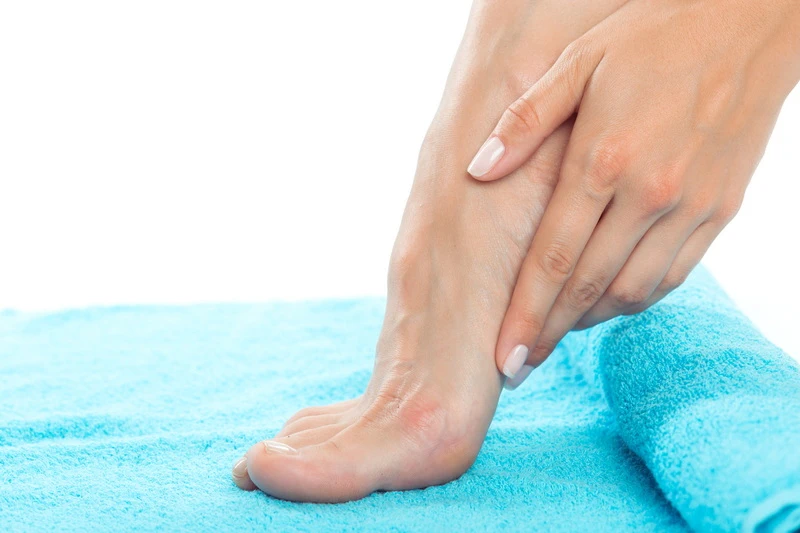Ingrown Toenail Treatment in Toronto
Ingrown Toenails: Causes, Symptoms, Treatment & Prevention
Are you struggling with painful, swollen toes or redness around your nail? Ingrown toenails are one of the most common and uncomfortable foot conditions. Left untreated, they can lead to infection and ongoing pain.

What Is an Ingrown Toenail?
An ingrown toenail (medically: onychocryptosis) happens when the edge or corner of a toenail grows into the surrounding skin, usually on the big toe. This can cause pain, swelling, and sometimes infection.
While anyone can develop an ingrown toenail, they’re especially common in teenagers, athletes, and people who wear tight shoes or have sweaty feet.
Causes of Ingrown Toenails
Understanding the root causes can help you prevent future problems:
- Improper Nail Trimming: Cutting toenails too short or rounding the edges encourages the nail to grow into the skin.
- Tight or Ill-Fitting Shoes: Shoes that crowd your toes or high heels can push the nail into the skin.
- Toe Trauma: Stubbing your toe, repetitive pressure from sports, or dropping something on your foot can trigger ingrown nails.
- Genetics: Some people inherit nail shapes or curvatures that make them more prone to this condition.
- Poor Foot Hygiene: Excess moisture or infrequent cleaning can soften the skin, making it easier for the nail to pierce it.
- Fungal Infections or Thickened Nails: These can alter the way the nail grows, increasing the risk.
- Excessive Foot Sweating: Softens the skin and increases the likelihood of nail penetration.
Your Feet Deserve Professional Care
Book your appointment today and take the first step toward healthier, pain-free feet.
Symptoms of Ingrown Toenails
Early detection is key to preventing complications. Watch for:
- Pain or tenderness along one or both sides of the nail
- Redness, swelling, or warmth around the nail
- Hardened or thickened skin near the nail edge
- Pus or drainage if infection develops
- Difficulty wearing shoes due to discomfort
If you notice increased pain, pus, or fever, seek medical attention are signs of infection.
How to Treat Ingrown Toenails at Home
For mild cases without infection, home care can often resolve the problem:
1. Soak Your Foot
- Soak in warm water (with Epsom salt if desired) for 15-20 minutes, 2-3 times daily to reduce swelling and soften the skin.
2. Gently Lift the Nail
- After soaking, use clean tweezers or a cotton bud to lift the edge of the nail gently.
- Place a small piece of sterile cotton or dental floss under the nail to encourage it to grow above the skin. Replace after each soak.
3. Apply Antibiotic Ointment
- Use an over-the-counter antibiotic cream to prevent infection and cover with a bandage.
4. Wear Comfortable Shoes
- Choose open-toed shoes or sandals to reduce pressure on the toe while it heals.
5. Keep Feet Clean and Dry
- Dry your feet thoroughly after bathing and change socks regularly.
Important: Never attempt to cut or dig out the ingrown nail yourself, especially if you have diabetes or poor circulation.

What Our Customers Say
Medical Treatments for Severe or Infected Ingrown Toenails
If home remedies don’t work, or if you notice signs of infection, consult a healthcare provider or podiatrist. Professional treatments include:
- Lifting the Nail: A podiatrist may carefully lift and splint the nail edge to help it grow above the skin.
- Taping or Splinting: Special tape or a gutter splint may be used to separate the nail from the skin.
- Partial Nail Removal: For more severe cases, part of the nail may be removed under local anesthesia.
- Matrixectomy: In recurring cases, the root (matrix) of the nail may be destroyed to prevent regrowth in the affected area.
- Antibiotics: Oral or topical antibiotics may be prescribed if infection is present.
- Complete Nail Removal: Rarely, the entire nail may be removed if the problem is chronic or severe.
Prevention: How to Avoid Ingrown Toenails
Preventing ingrown toenails is easier than treating them. Follow these expert tips:
- Trim Toenails Properly: Cut straight across, not too short, and avoid rounding the corners.
- Use Clean, Sharp Nail Clippers: Disinfect tools before and after use.
- Wear Proper Footwear: Choose shoes with a wide toe box and avoid shoes that squeeze or crowd your toes.
- Maintain Good Foot Hygiene: Wash feet daily, dry thoroughly, and change socks if they become damp.
- Protect Your Toes: Wear protective footwear during sports or activities that could injure your toes.
- File Down Uneven Nails: If your nails are thick or uneven, gently file them straight across.
Who’s at Risk?
- Adolescents and Athletes: Rapid growth and frequent sports injuries increase risk.
- People with Diabetes or Poor Circulation: Higher risk of complications and infection.
- Those with Family History: Genetics can play a role in nail shape and growth patterns.
- People with Excessive Foot Sweating: Moisture softens the skin, making it easier for nails to become ingrown.
When to See a Doctor
Seek professional care if you experience:
- Severe pain or swelling that doesn’t improve with home treatment
- Signs of infection (pus, redness, warmth, fever)
- Recurring ingrown toenails
- Underlying health conditions like diabetes or vascular disease
A podiatrist can provide tailored treatment and help prevent complications.
Frequently Asked Questions About Ingrown Toenails
Can I prevent ingrown toenails from coming back?
Yes, with proper nail trimming, good hygiene, and wearing shoes that fit well.
Are ingrown toenails dangerous?
While usually not serious, they can lead to infection and complications, especially in people with diabetes or poor circulation.
Should I cut out an ingrown toenail myself?
No. This can cause infection or worsen the problem. Always seek professional help for severe or persistent cases.
How long does it take for an ingrown toenail to heal?
Mild cases often improve within a week or two with home care. Severe cases may require several weeks, especially after medical procedures.
Can children get ingrown toenails?
Yes, especially if they wear tight shoes or trim their nails improperly.
Will insurance cover ingrown toenail treatment?
Most insurance plans cover medically necessary treatments, especially if infection or pain is present.
Expert Tips for Healthy Toenails
Invest in high-quality, well-fitting shoes for your activity level.
Schedule regular foot check-ups, especially if you’re prone to nail or skin issues.
Learn proper nail care techniques from your podiatrist.
If you have diabetes, inspect your feet daily and seek prompt care for any changes.
Ingrown toenails are painful but manageable with the right care. By understanding the causes, recognizing symptoms early, and following proven treatment and prevention strategies, you can keep your feet healthy and comfortable.
If you’re dealing with persistent or severe symptoms, don’t hesitate to contact us for expert guidance.
Looking for better foot support? We're just around the corner.
Call us today at
